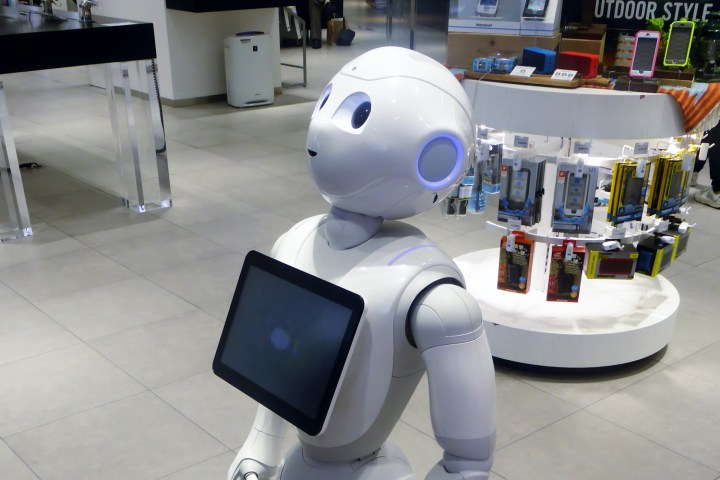
It’s no joke. The store will open for a limited amount of time at the end of March in Minato-ku, Tokyo, and Pepper will be there to greet customers, talk them through contracts, and point out the phone that suits their needs best. SoftBank says it’s the world’s first shop where service is exclusively provided by a robot.
What makes Pepper suitable to work in the high-pressure sales environment that is a modern mobile phone store? It can read human emotions, a key tool in any keen salesperson’s arsenal, and respond accordingly. It does this by observing the expression on your face, body language, and even your tone of voice. Pepper isn’t imposing at 120cm tall, and has a friendly face to put would-be buyers at ease. Well, as at-ease as possible when you’re being sold a phone by a robot.
It may sound like a crazy idea, but meeting and greeting people at stores and businesses is one of Pepper’s prime directives. SoftBank’s pushing Pepper to the limit by leaving it in charge of an entire store, but if it’s successful, then it’s sure to help convince more companies that Pepper can handle the front desk of their office.
The SoftBank store opens on March 28 until April 3, and Pepper has a full workday ahead with hours between midday and 7pm. Pepper went on sale in Japan last June, when the first run of 1,000 sold out in 60-seconds.



